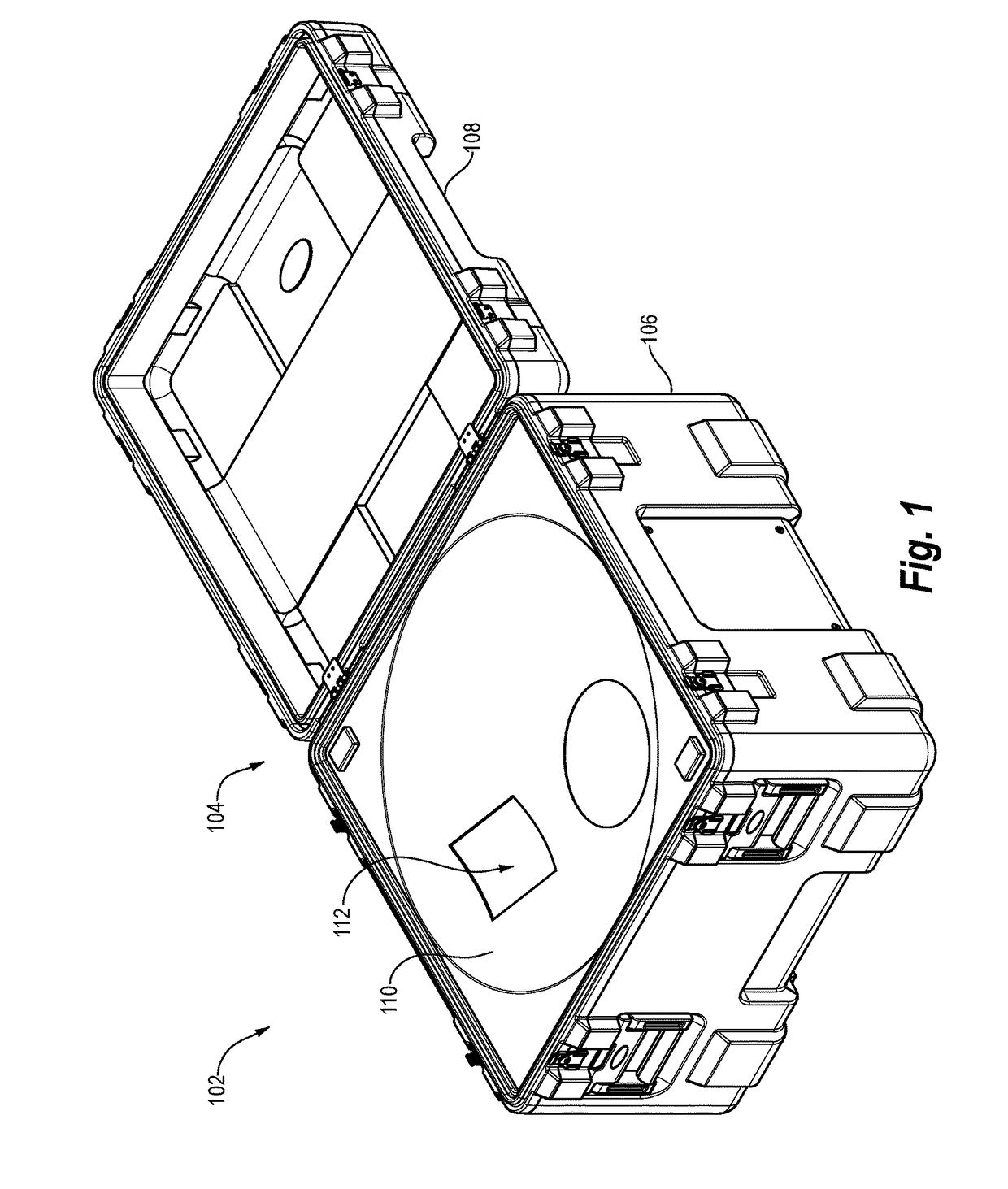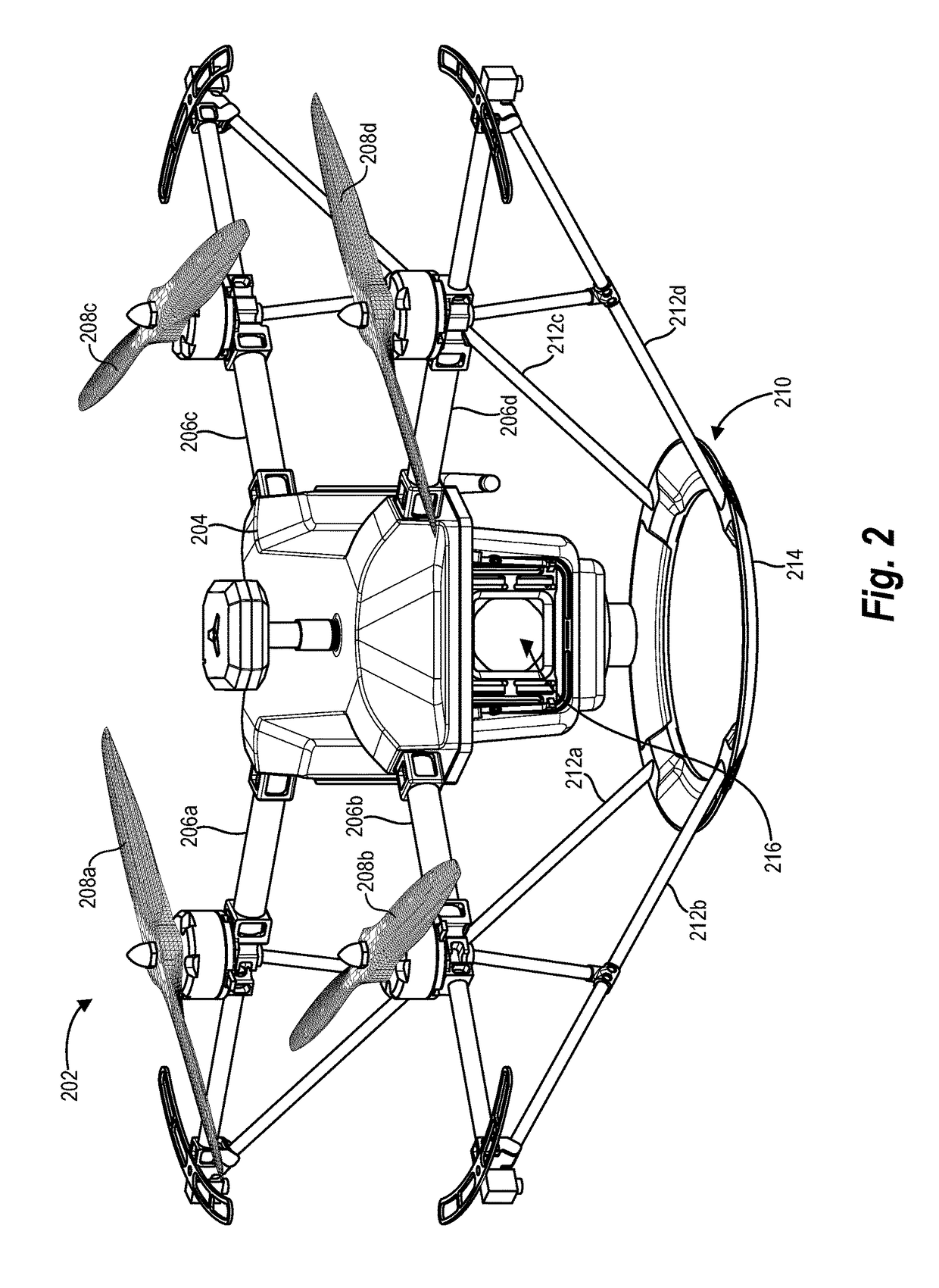Battery arm sensor assembly
a sensor and battery arm technology, applied in the field of battery arm sensor assembly, can solve the problems of limiting the distance and duration of a uav to fly and perform various tasks, recharging and/or replacing batteries from within the landed uav, and considerable expense, and achieve the effect of convenient removal
- Summary
- Abstract
- Description
- Claims
- Application Information
AI Technical Summary
Benefits of technology
Problems solved by technology
Method used
Image
Examples
Embodiment Construction
[0031]One or more embodiments described herein include an autonomous landing system that includes a battery arm for engaging and removing a battery assembly from within an unmanned aerial vehicle (UAV). For example, a system can include a UAV that includes a main body and a replaceable battery assembly within the main body of the UAV. Additionally, the system can include an unmanned aerial vehicle ground station (UAVGS) that includes a landing housing that receives the UAV when the UAV lands within the UAVGS. Additionally, the UAVGS can include a battery arm that selectively extends into the landing housing of the UAVGS to grip and remove a battery assembly from within the UAV. Additionally, in one or more embodiments, the battery assembly includes a plurality of sensor contacts arranged in a pattern on an end of the battery assembly. Further, the battery arm can include one or more sensors positioned on the battery arm that detect a position of the plurality of sensor contacts on t...
PUM
 Login to View More
Login to View More Abstract
Description
Claims
Application Information
 Login to View More
Login to View More - R&D
- Intellectual Property
- Life Sciences
- Materials
- Tech Scout
- Unparalleled Data Quality
- Higher Quality Content
- 60% Fewer Hallucinations
Browse by: Latest US Patents, China's latest patents, Technical Efficacy Thesaurus, Application Domain, Technology Topic, Popular Technical Reports.
© 2025 PatSnap. All rights reserved.Legal|Privacy policy|Modern Slavery Act Transparency Statement|Sitemap|About US| Contact US: help@patsnap.com



